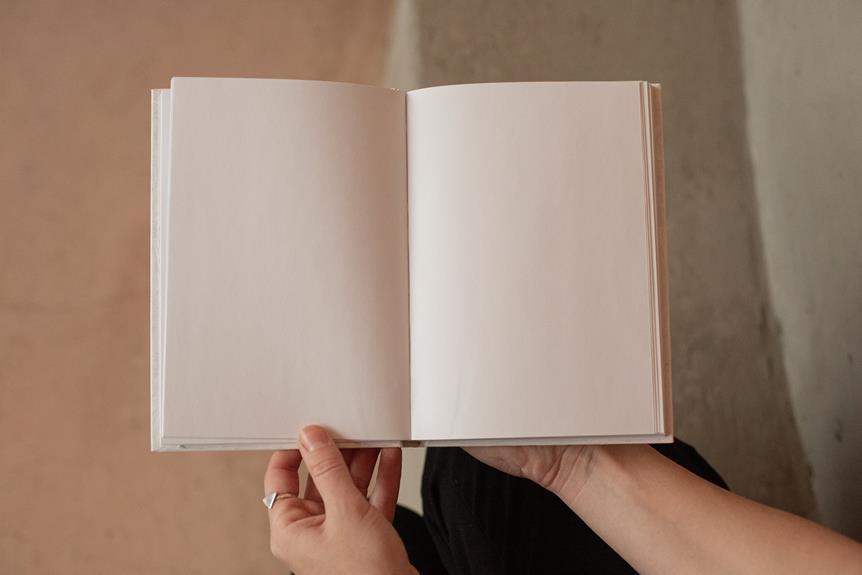So, your sheets have taken on a new waxy persona, huh? It's not exactly the luxurious feel you were going for. Well, fear not, because you're about to master the art of dealing with this waxy sheet situation.
From understanding the sneaky causes to implementing the right care techniques, you'll soon be reclaiming that soft, cozy bedtime experience. No need to panic or toss out your favorite sheets just yet.
Let's dive into the nitty-gritty of waxy sheets and emerge as the ultimate bedding connoisseur.
Key Takeaways
- Waxy sheets can be caused by detergent and fabric softener buildup, excessive use of these products, hard water reacting with detergent, and accumulation of residue over time.
- Fabric texture can be restored by using less fabric softener or dryer sheets, adding white vinegar to the rinse cycle, using a deep-cleaning technique with baking soda and vinegar, using water softener, or considering natural fabric softener alternatives.
- Reduced absorbency in fabric can be caused by fabric softener buildup and improper washing and drying techniques, and it can be addressed by avoiding excessive use of fabric softeners, using white vinegar and water to remove residue, investing in water softeners, and practicing regular maintenance with mild detergent and baking soda.
- Fabric discoloration can be prevented through the use of water softeners and vinegar in the rinse cycle, washing in hot water, using quality laundry detergent for hard water, and practicing proactive fabric maintenance.
Understanding the Causes of Waxy Sheets
If your sheets are feeling waxy, it could be due to a buildup of detergent and fabric softener residue. When you wash your sheets, some of the detergent and fabric softener can remain trapped in the fibers, especially if you use too much of these products. Over time, this residue can accumulate and make your sheets feel waxy and stiff.
Another common cause of waxy buildup is using hard water for washing. Hard water contains minerals that can react with the detergent and form a soap scum, leading to the waxy feeling on your sheets.
To remove waxy residue from your sheets, consider washing them again using the hottest water safe for the fabric and adding a cup of distilled white vinegar to the rinse cycle. The vinegar helps to break down the residue and freshen the fabric.
Additionally, using a laundry stripping method can help eliminate the waxy buildup. Simply soak your sheets in a mixture of hot water, laundry detergent, and borax or washing soda, then rinse thoroughly.
These methods can effectively restore your sheets to their soft, waxy-free state.
Effects of Fabric Softener Buildup
If you're noticing that your sheets feel different and less absorbent, fabric softener buildup may be the culprit.
The texture of the fabric can change, becoming waxy and less soft to the touch.
Additionally, the reduced absorbency in the fabric can affect the overall comfort and performance of your sheets.
Fabric Texture Changes
Have you noticed your sheets feeling rough and waxy despite regular washing and drying? Fabric softener buildup can cause fabric texture changes, leaving your sheets feeling unpleasant. To prevent this buildup, consider using less fabric softener or switching to dryer sheets.
Additionally, try adding a cup of white vinegar to the rinse cycle when washing your sheets to help break down any residue. To restore the texture of your sheets, consider using a deep-cleaning technique.
Wash the affected sheets with hot water and a cup of baking soda, then rinse with white vinegar. After that, wash the sheets again with detergent. This process can help remove the waxy buildup and restore the softness of your sheets.
Reduced Absorbency in Fabric
After fabric softener buildup causes fabric texture changes, it can also lead to reduced absorbency in the fabric, impacting your sheets' ability to wick away moisture effectively. This buildup can damage the fabric, causing it to repel liquids rather than absorb them. The chemical residue from fabric softeners forms a barrier on the fabric, preventing it from effectively absorbing moisture.
Improper washing techniques, such as using excessive fabric softener or not rinsing the fabric adequately, can exacerbate the issue. When fabric softener residue accumulates, it can result in improper washing and drying methods, leading to reduced absorbency. Additionally, using high heat in the dryer can further solidify the softener residue, exacerbating the reduced absorbency.
To maintain optimal fabric absorbency, it's essential to use proper washing and drying techniques, avoiding excessive use of fabric softeners.
Impact of Hard Water on Sheets
If your sheets feel rough and look discolored, hard water residue might be the culprit. The minerals in hard water can leave a waxy film on your sheets, affecting their texture and appearance.
But don't worry, we'll explore effective solutions for softening your sheets and restoring their quality.
Hard Water Residue
When hard water seeps into your sheets, it leaves behind a waxy residue that can impact their softness and comfort. To address this issue, consider the following:
- Removing Residue: Use a mixture of white vinegar and water to soak the sheets before washing to help dissolve the waxy buildup.
- Water Softeners: Invest in a water softener to reduce the mineral content in your water, preventing the buildup of residue on your sheets.
- Regular Maintenance: Wash your sheets with a mild detergent and add a cup of baking soda to the wash to help break down the residue.
- Proper Drying: Ensure your sheets are fully dried to prevent any remaining mineral deposits from hard water from adhering to the fabric.
- Fabric Conditioners: Use fabric softeners or conditioners specifically designed for hard water to keep your sheets feeling soft and free from residue.
Taking these steps can help combat the impact of hard water residue, ensuring your sheets remain soft and comfortable.
Fabric Discoloration Risk
To address the impact of hard water on your sheets, consider the risk of fabric discoloration due to mineral deposits. Hard water contains minerals like calcium and magnesium, which can build up on your sheets, leading to a yellow or grayish tint.
Preventing discoloration caused by hard water involves proactive fabric maintenance. To prevent this, use a water softener to reduce mineral content in your laundry water. Additionally, adding a cup of vinegar to the rinse cycle can help break down mineral deposits.
It's important to wash your sheets in the hottest water safe for the fabric and use a quality laundry detergent specifically formulated for hard water. Being proactive in fabric maintenance can help preserve the color and quality of your sheets, ensuring they stay looking fresh and vibrant.
Solutions for Softening
Using a water softener is an effective way to combat the impact of hard water on your sheets, ensuring they feel soft and comfortable.
In addition to using a water softener, there are other strategies you can employ to soften your sheets and counter the effects of hard water. Consider trying the following:
- Use vinegar: Adding a cup of white vinegar to the rinse cycle can help break down mineral deposits, leaving your sheets feeling softer.
- Baking soda boost: Add a half cup of baking soda along with your detergent to soften your sheets naturally.
- Opt for fabric softener alternatives: Look for natural fabric softener alternatives like wool dryer balls or dryer sheets made from plant-based materials.
- Embrace natural remedies: Explore using natural remedies such as eco-friendly laundry detergents that are specifically formulated to soften hard water.
- Double rinse: Consider giving your sheets an extra rinse to ensure all the detergent and mineral residues are thoroughly removed.
Tips for Restoring Sheet Softness
If your sheets are feeling waxy, you should regularly wash them with a gentle detergent to help restore their softness. Additionally, consider these tips for restoring sheet softness:
| Tip | Description |
|---|---|
| Vinegar Wash | Add a cup of white vinegar to the rinse cycle to remove any residue and restore smoothness to your sheets. |
| Baking Soda Treatment | Wash your sheets with baking soda to help soften them. Add half a cup of baking soda to the wash cycle. |
| Wool Dryer Balls | Toss a few wool dryer balls into the dryer with your sheets. They help to naturally soften and fluff up the fabric without the use of chemicals. |
Choosing the Right Detergent
You should opt for a detergent specifically formulated for delicates to ensure that your sheets are effectively cleaned without leaving a waxy residue.
When choosing the right detergent for your sheets, consider the following:
- Eco-friendly detergents: Look for detergents that are biodegradable and free from harsh chemicals to protect both your sheets and the environment.
- Natural fabric softeners: Consider using natural fabric softeners, such as those derived from plant-based ingredients, to keep your sheets soft and free from waxy buildup.
- Hypoallergenic options: If you have sensitive skin, select a detergent that's hypoallergenic to prevent any irritation while maintaining the cleanliness of your sheets.
- Fragrance-free formulas: Opt for fragrance-free detergents to avoid any artificial scents that may contribute to a waxy feel on your sheets.
- Gentle yet effective formulas: Choose a detergent that's gentle on delicate fabrics but still powerful enough to remove dirt and oils without leaving behind any residue.
Preventing Waxy Buildup in the Future
To prevent waxy buildup in the future, ensure that you rinse your sheets thoroughly after washing them with a gentle detergent suitable for delicates. Proper washing is essential to prevent waxy residue from accumulating on your sheets.
When washing, use warm water and a mild detergent to break down oils and residues. Additionally, avoid using fabric softeners or dryer sheets as they can leave behind waxy deposits.
To further prevent waxy buildup, consider using a laundry booster specifically designed to remove residues from fabric. Fabric maintenance is crucial in preventing waxy buildup on your sheets.
Follow care instructions carefully, and avoid using excessive heat when drying your sheets, as this can cause waxy substances to melt and adhere to the fabric fibers.
Lastly, store your sheets in a cool, dry place to prevent any waxy residues from forming during storage.
Additional Care Tips for Bedding
Consider regularly rotating your bedding to promote even wear and extend the lifespan of your sheets.
Here are some additional care tips to keep your bedding fresh and in top condition:
- Wash with Care: Use a gentle, fragrance-free detergent to avoid chemical buildup and wash your sheets in warm water to ensure thorough cleaning without damaging the fabric.
- Proper Storage Techniques: When not in use, store your bedding in a cool, dry place to prevent moisture and mildew. Consider using breathable storage bags to protect your sheets while allowing air circulation.
- Air Them Out: After washing, hang your sheets outside to air-dry in the sunlight. This not only helps to naturally bleach and freshen them but also eliminates any leftover moisture.
- Restoring Freshness: If your sheets start to feel less fresh, add a cup of white vinegar to the rinse cycle to eliminate any lingering odors and restore softness.
- Iron with Care: If you prefer wrinkle-free sheets, iron them on a low, warm setting to avoid damaging the fabric. This also helps to maintain a crisp, smooth appearance.
Frequently Asked Questions
Can Waxy Sheets Cause Skin Irritation or Allergies?
Waxy sheets can aggravate skin sensitivity and cause allergic reactions due to the waxy residue from fabric softeners. It's essential to choose hypoallergenic, fragrance-free options to avoid potential irritation and maintain healthy skin.
Is There a Specific Type of Fabric Softener That Is More Likely to Cause Waxy Buildup on Sheets?
You should consider using liquid fabric softeners, as they are less likely to cause waxy buildup on sheets compared to their solid counterparts. Also, check the compatibility of the fabric softener with your sheet material to prevent waxy residue.
How Often Should I Wash My Sheets to Prevent Waxy Buildup?
To prevent waxy buildup on sheets, wash them every 1-2 weeks. Regular washing removes oils and residue. This helps keep your sheets feeling fresh and clean. Using a mild detergent and avoiding fabric softeners can also prevent buildup.
Are There Any Natural Remedies for Removing Waxy Buildup From Sheets?
For removing waxy buildup from sheets, you can try DIY solutions like using vinegar or baking soda. These natural alternatives can help break down the waxy residue and restore your sheets to their original softness.
Can Waxy Buildup on Sheets Attract More Dust and Allergens?
To prevent waxy buildup on sheets, wash with hot water and vinegar. Waxy sheets can attract dust and allergens, affecting sleep quality. Regularly cleaning sheets and using natural remedies can help maintain a comfortable sleeping environment.
- Choosing the Right Fabrics for Babies - July 20, 2024
- Impact of Fabrics on Skin Health - July 20, 2024
- Benefits of Antimicrobial Fabrics - July 20, 2024








